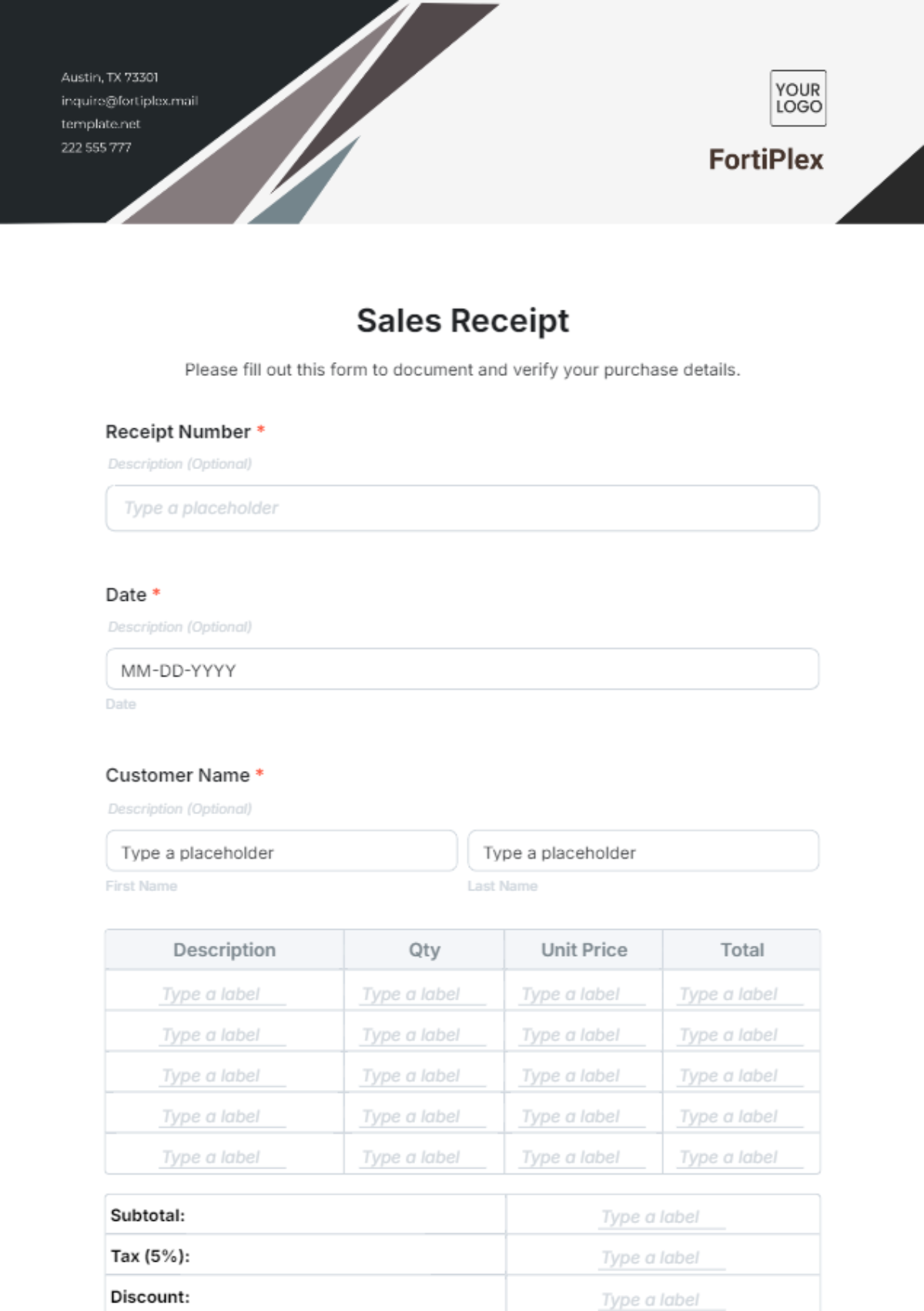Sales Journal On Analytics Best Practices
I. Introduction to Sales Journal on Analytics Best Practices
A. Overview
Purpose of the Sales Journal
The purpose of this Sales Journal is to provide comprehensive insights and guidelines on leveraging analytics for optimizing sales strategies and improving overall sales performance. It aims to equip sales professionals, managers, and decision-makers with the knowledge and best practices necessary to effectively utilize analytics tools and techniques in their sales operations.
Objectives
To elucidate the importance of analytics in modern sales environments.
To outline key metrics and KPIs relevant to sales analytics.
To offer guidance on selecting, implementing, and utilizing analytics tools.
To provide strategies for data collection, management, analysis, and visualization.
To showcase case studies and success stories highlighting the impact of analytics on sales performance.
Target Audience
Sales managers and executives seeking to improve sales performance and efficiency.
Sales representatives looking to enhance their understanding and utilization of analytics.
Business owners and entrepreneurs interested in leveraging data-driven insights for sales growth.
B. Importance of Analytics in Sales
Benefits of Utilizing Analytics in Sales Operations
1.1 Improved Decision Making
Analytics empowers sales professionals with data-driven insights, enabling informed decision-making processes.
By analyzing historical sales data and market trends, sales teams can make strategic decisions regarding pricing, product offerings, and target markets.
Real-time analytics dashboards provide visibility into sales performance metrics, allowing for agile adjustments to sales strategies based on current market conditions.
1.2 Enhanced Sales Performance
By identifying high-performing sales channels, products, and customer segments, analytics enables sales teams to allocate resources effectively and focus efforts on areas with the highest potential for revenue generation.
Predictive analytics models help forecast future sales trends and anticipate customer needs, enabling proactive sales strategies and improved sales forecasting accuracy.
Sales analytics also facilitates performance tracking and accountability within sales teams, leading to improved individual and collective sales performance.
1.3 Increased Revenue Generation
By optimizing sales processes and identifying cross-selling and upselling opportunities, analytics contributes to revenue growth and profitability.
Through data-driven customer segmentation and targeted marketing campaigns, sales teams can effectively engage with prospects and existing customers, driving sales conversions and revenue generation.
Additionally, analytics enables sales teams to identify and mitigate factors contributing to sales attrition, thereby maximizing customer lifetime value and long-term revenue potential.
II. Understanding Key Metrics in Sales Analytics
A. Sales Metrics Overview
Sales Revenue
1.1 Definition and Calculation
Sales revenue refers to the total income generated from the sale of goods or services during a specific period. It is a crucial financial metric that indicates the effectiveness of an organization's sales efforts.
Calculation: Sales Revenue = Quantity Sold * Unit Price
Quantity Sold: The total number of units of products or services sold during the specified period.
Unit Price: The price at which each unit of product or service is sold.
1.2 Importance in Evaluating Sales Performance
Sales revenue serves as a fundamental measure of business success and growth. It directly impacts the financial health and profitability of a company.
By analyzing sales revenue trends over time, organizations can assess the effectiveness of their sales strategies and identify areas for improvement. For example, a consistent increase in sales revenue may indicate successful marketing campaigns or product launches, while a decline may signal market saturation or competitive pressures.
Sales revenue also provides insights into customer demand, market trends, and product performance, informing strategic business decisions such as pricing adjustments, product development initiatives, and resource allocation.
B. Customer Acquisition Cost (CAC)
Definition and Calculation
Customer Acquisition Cost (CAC) represents the total cost incurred by a company to acquire a new customer. It encompasses all expenses associated with marketing, sales, and promotional activities aimed at acquiring new customers.
Calculation: CAC = Total Sales and Marketing Expenses / Number of New Customers Acquired
Total Sales and Marketing Expenses: The sum of all expenditures related to sales and marketing efforts, including advertising costs, sales team salaries, marketing campaigns, and promotional activities.
Number of New Customers Acquired: The total count of customers acquired during a specific period, typically calculated on a monthly or annual basis.
1.1 Significance in Assessing Marketing and Sales Efficiency
CAC is a critical metric for evaluating the efficiency and effectiveness of marketing and sales activities. It helps organizations measure the return on investment (ROI) of their customer acquisition efforts.
By comparing CAC to customer lifetime value (CLV), companies can assess the long-term profitability of acquiring new customers. Ideally, CAC should be lower than CLV to ensure positive ROI and sustainable business growth.
Lowering CAC while maintaining or increasing customer quality is essential for optimizing marketing and sales strategies. Strategies to reduce CAC may include improving lead generation tactics, optimizing marketing channels, enhancing sales processes, and increasing customer retention efforts.
III. Implementing Analytics Tools and Technologies
A. Selection Criteria for Analytics Tools
1. Considerations for Choosing Suitable Analytics Solutions
1.1 Scalability
Scalability is crucial when selecting an analytics tool. The chosen solution should be capable of handling large volumes of data efficiently and be able to scale seamlessly as the organization grows. This ensures that the tool can accommodate increased data sources, user access, and analytical requirements without compromising performance.
1.2 Integration Capabilities
Integration with existing systems is essential for data coherence and comprehensive insights. The analytics tool should seamlessly integrate with other business systems such as CRM, ERP, and marketing automation platforms. This integration facilitates the flow of data between different systems, ensuring that all relevant data sources are utilized for analysis.
1.3 Customization Options
Flexibility and customization are vital factors in aligning the analytics tool with specific business needs. The tool should offer customization options that allow users to tailor reports, dashboards, and metrics according to their unique requirements. This ensures that the analytics solution can adapt to changing business needs and workflows.
B. Popular Analytics Tools in Sales
Overview of Leading Analytics Platforms
[Tool Name 1]: This analytics platform offers advanced reporting and visualization features, empowering users to derive actionable insights in real-time. With predictive analytics capabilities, it aids in forecasting sales trends and identifying potential opportunities.
[Tool Name 2]: Known for its intuitive user interface, this analytics tool provides a user-friendly experience, making it easy for teams to adopt and utilize. Its seamless integration with popular CRM systems ensures that sales data is readily accessible for analysis.
[Tool Name 3]: With customizable dashboards and machine learning algorithms, this analytics platform enables organizations to tailor analytics solutions to their specific business needs. It facilitates predictive analytics and forecasting, empowering businesses to make data-driven decisions.
IV. Best Practices for Data Collection and Management
A. Data Collection Methods
Automated Data Collection Techniques
Automated data collection techniques streamline the process of gathering data from various sources, minimizing manual efforts and reducing the risk of errors. Common automated data collection methods include:
CRM Integration: Integrating sales data from CRM systems allows organizations to capture customer interactions, sales activities, and pipeline information automatically.
Website Analytics: Utilizing web analytics tools such as Google Analytics enables businesses to track online customer behavior, website traffic, and conversion metrics in real-time.
B. Data Quality Assurance
Importance of Data Accuracy and Consistency
Ensuring data accuracy and consistency is paramount for reliable analytics insights and informed decision-making. Poor data quality can lead to erroneous conclusions and ineffective strategies. Key aspects of data quality assurance include:
Regular Data Cleansing Procedures: Implementing routine data cleansing processes helps identify and rectify inaccuracies, duplicates, and inconsistencies in the dataset, ensuring that the data remains accurate and reliable.
Validation Processes: Establishing validation protocols verifies the integrity and completeness of incoming data, ensuring that only high-quality data is used for analysis. This helps maintain data consistency and reliability throughout the analytics process.
V. Analyzing Sales Data for Insights
A. Key Performance Indicators (KPIs)
Identifying Relevant KPIs for Sales Analytics
When analyzing sales data, it's crucial to focus on key performance indicators (KPIs) that provide actionable insights into sales performance and effectiveness. Some essential KPIs include:
Sales Conversion Rate: The percentage of leads or prospects that convert into paying customers, indicating the effectiveness of the sales process.
Average Deal Size: The average monetary value of each sale, providing insights into product pricing, customer preferences, and sales strategies.
Sales Pipeline Velocity: The speed at which deals move through the sales pipeline, helping assess sales team productivity and efficiency.
Customer Churn Rate: The rate at which customers stop doing business with a company, indicating customer satisfaction and retention efforts' effectiveness.
B. Sales Forecasting Techniques
Predictive Analytics Models
Predictive analytics leverages historical sales data, market trends, and other relevant factors to forecast future sales performance accurately. By applying statistical algorithms and machine learning techniques, predictive models can identify patterns and trends, enabling organizations to anticipate demand fluctuations and plan resources accordingly.
Time-Series Analysis
Time-series analysis involves examining sales data over time to identify recurring patterns, seasonality, and trends. This technique helps businesses understand historical sales trends and make informed predictions about future sales performance. By analyzing past sales data at regular intervals, organizations can identify seasonal fluctuations, market trends, and potential opportunities or challenges.
Machine Learning Algorithms for Forecasting
Machine learning algorithms, such as regression analysis, neural networks, and decision trees, can be used for sales forecasting. These algorithms analyze historical sales data along with various external factors such as economic indicators, customer demographics, and marketing campaigns to generate accurate sales forecasts. Machine learning models can adapt and improve over time as they receive new data, enabling organizations to make more accurate predictions and optimize sales strategies.
VI. Visualizing Sales Data through Dashboards
A. Dashboard Design Principles
Clarity and Simplicity
Effective sales dashboards prioritize clarity and simplicity, presenting key metrics and insights in a clear and easily understandable format. Avoid clutter and unnecessary visual elements that can distract users from critical information.
Interactive Features
Interactive features such as filters, drill-down capabilities, and hover-over tooltips enhance user engagement and allow for deeper exploration of sales data. Users should be able to interact with the dashboard to gain more detailed insights and customize their views based on specific criteria.
Customization Options
Providing customization options enables users to tailor the dashboard to their individual preferences and business needs. Allow users to customize dashboard layouts, select relevant KPIs, and adjust visualization settings to align with their goals and objectives.
B. Examples of Effective Sales Dashboards
[Dashboard Example 1]: Sales Performance Overview
This dashboard provides a comprehensive overview of key sales metrics such as revenue, sales pipeline, conversion rates, and top-performing products or regions. Interactive features allow users to drill down into specific metrics, compare performance across different time periods, and identify trends or outliers.
[Dashboard Example 2]: Pipeline Analysis Dashboard
The pipeline analysis dashboard focuses on visualizing sales pipeline metrics, including deal stages, pipeline velocity, and win rates. It helps sales managers and representatives track the progress of deals through the sales pipeline, identify bottlenecks, and prioritize activities to accelerate deal closure. Interactive features enable users to filter data by sales rep, product category, or customer segment for deeper analysis.
VII. Leveraging Analytics for Sales Strategy Optimization
A. Sales Process Optimization
Streamlining Sales Workflow through Analytics Insights
Analytics insights can identify inefficiencies and bottlenecks in the sales process, enabling organizations to streamline workflows and improve operational efficiency. By analyzing sales data, organizations can identify redundant processes, optimize sales funnel stages, and automate repetitive tasks to enhance productivity and reduce cycle times.
Identifying Bottlenecks and Opportunities for Improvement
Analytics tools can pinpoint areas of the sales process where prospects are getting stuck or dropping off, indicating potential bottlenecks. By identifying these bottlenecks, sales teams can implement targeted interventions to address underlying issues, such as refining sales messaging, providing additional training, or offering incentives to encourage progression through the sales funnel.
B. Sales Team Performance Management
Using Analytics to Track and Improve Sales Rep Performance
Analytics allows organizations to track individual sales rep performance metrics, such as activity levels, conversion rates, and quota attainment. By analyzing these metrics, sales managers can identify top performers, coaching opportunities, and areas for improvement. Data-driven insights enable targeted coaching and training programs to enhance sales rep skills and performance.
Coaching and Training Based on Analytics Data
Leveraging analytics data, sales managers can tailor coaching and training programs to address specific performance gaps and development needs identified through data analysis. By providing personalized feedback and actionable insights derived from analytics, sales managers can empower sales reps to improve their sales techniques, overcome challenges, and achieve greater success.
VIII. Case Studies and Success Stories
A. [Company A]: Increasing Sales Efficiency with Analytics Implementation
Overview of Challenges Faced
[Company A] faced challenges in optimizing sales performance and achieving revenue targets due to a lack of visibility into sales data and inefficient sales processes.
Analytics Solutions Implemented
[Company A] implemented an advanced analytics platform that integrated with its CRM system to consolidate sales data and provide real-time insights into sales performance metrics.
Results Achieved
With the implementation of analytics-driven sales strategies, [Company A] achieved a significant improvement in sales efficiency, with a [20%] increase in conversion rates and a [15%] reduction in sales cycle times. The company also experienced a [25%] increase in overall revenue, attributed to targeted sales efforts and data-driven decision-making.
B. [Company B]: Enhancing Customer Experience through Data-Driven Sales Strategies
Key Initiatives Implemented
[Company B] focused on leveraging sales analytics to enhance the customer experience and drive customer engagement. This included analyzing customer behavior data, segmenting customers based on preferences and purchasing patterns, and personalizing sales interactions.
Impact on Customer Satisfaction and Retention
By implementing data-driven sales strategies, [Company B] improved customer satisfaction and retention rates by [30%]. Personalized sales interactions and targeted marketing campaigns based on analytics insights resulted in higher customer engagement, increased repeat purchases, and improved customer loyalty.
IX. Conclusion
A. Recap of Key Points
Throughout this Sales Journal, we have explored the importance of leveraging analytics for optimizing sales strategies and improving sales performance. We discussed key metrics, analytics tools, best practices for data collection and management, and strategies for analyzing sales data to derive actionable insights.
B. Future Trends in Sales Analytics
The future of sales analytics holds promising advancements, including the integration of artificial intelligence (AI) and machine learning (ML) technologies for predictive analytics, enhanced data visualization techniques for more intuitive insights, and increased focus on real-time analytics for agile decision-making.
C. Encouragement for Adoption of Analytics in Sales Operations
As businesses continue to navigate increasingly competitive markets, embracing analytics-driven sales strategies will be essential for gaining a competitive edge, maximizing sales efficiency, and driving revenue growth. By investing in analytics tools, empowering sales teams with data-driven insights, and fostering a culture of analytics-driven decision-making, organizations can position themselves for success in the evolving sales landscape.















































